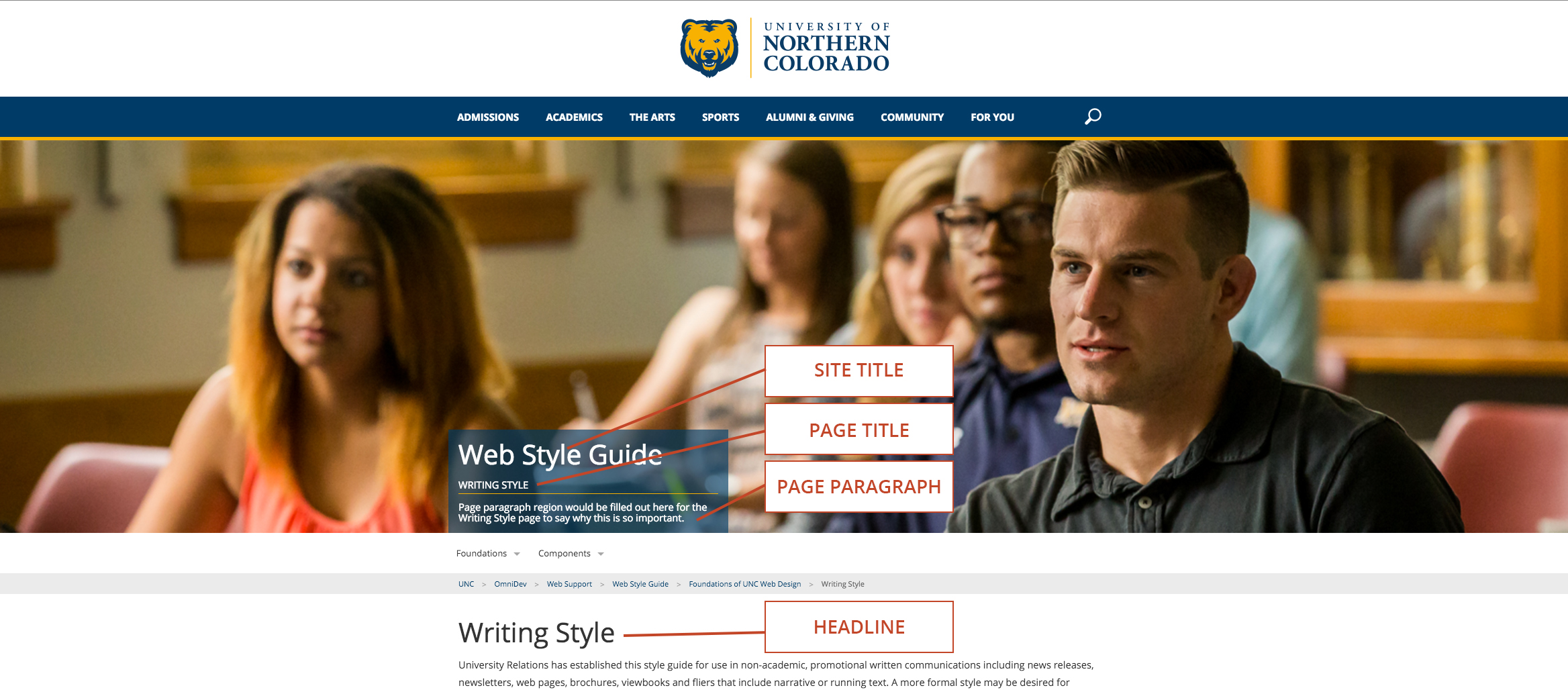Writing Style
University Relations has established this style guide for use in non-academic, promotional written communications including news releases, newsletters, web pages, brochures, viewbooks and fliers that include narrative or running text. A more formal style may be desired for invitations, event programs, letters and for other uses.
About the University’s Style Guide
This guide is based on the principles found in the Associated Press Stylebook and
Libel Manual. Despite the scope of editorial style contained in the AP guide, it doesn’t
address some issues unique to UNC that are frequently encountered. This style guide
is intended to provide answers to those issues, and to a lesser extent, other questions
of grammar such as punctuation, capitalization and acceptable word usage.
On spelling matters, our preferred resource is Webster's New World Dictionary.
For More Information
If you have questions, would like more information or have a suggestion for future
revisions of the style guide, contact UNC’s Office of University News & Public Relations
at 970-351-2331 or public.relations@unco.edu.
Web Specific Writing Tips
You only have a few seconds to engage your reader on the web. So, to make the writing on your site more relatable, combine a conversational tone with "you" language. This places more emphasis on the reader instead of we and us. See two examples of what to do and not to do below:
At UNC, you learn from excellent, accessible teachers who bring what they learn from their research and scholarship into your class. You work with faculty on research, scholarship and creative works, and have the opportunity to make a positive difference in your community.
Don't do this:
At UNC, students learn from excellent, accessible teachers who bring what they learn
from their research and scholarship into their teaching. Our students enrich their
education while they work with faculty on research, scholarship and creative works,
and we offer opportunities to make a positive difference in the community.
Use the ABC's:
A good exercise to help you think strategically about your page content is to use the "ABC's":
A-Audience. Who is the intended target(s) of the information?
B-Behavior. What do you want your reader to do, or what kind of action do you want your audience to take once they read the information?
C-Content. What do you want to tell your reader? Why should this page exist? Your content should help your reader answer the question, "What's in it for me?"
Common Errors
Use these rules of thumb to avoid some of the common errors we see online and in print.
- DO list phone numbers with dashes 000-000-0000 and not (000) 000-0000 or 000.000.0000
- DO write out the word percent instead of using the symbol "%"
- DO place punctuation (such as the period at the end of a sentence) inside quotations(.")
- DO NOT refer to Ph.D.- credentialed faculty as Dr. ____________. Indicate degree (i.e., Mary Smith, Ph.D.) in first reference, then use last name throughout.
- DO use an apostrophe in "bachelor's degree" and "master's degree" but as part of the formal degree name, do not add the possessive: Master of Arts, not master's of arts.
- DON'T capitalize when you're in doubt. For example, university is not capitalized unless it is part of the proper name: "The university is closing early today" versus "The University of Northern Colorado is closing early today." As our style guide indicates, UNC does capitalize program names.
Acronyms
Although acronyms are an effective way to avoid repeating lengthy department, program or organization names, they should be avoided whenever possible. ALWAYS spell out the name followed by the acronym in parenthesis on first references on a page or within a document or story. Keep in mind that acronyms we use may be unfamiliar to prospective students and other external audiences--which may create an exclusive culture rather than inclusive. There are time when acronyms can be used effectively:
- When it becomes necessary, spell out the entity's proper name upon first reference,
followed by the acronym. The acronym can be used for any subsequent references on
the page to simplify the language on the page.
- Example: College of Humanities and Social Sciences (HSS)
- It is OK to use acronyms when the acronym is commonly used, and better known than
the proper name it represents. Be sure to provide context within the sentence to avoid
confusion as even common acronyms can represent different things.
- Example: CNN, ESPN
Web Header/Headline Writing
Headers and headlines are used throughout the site as page titles, subheads and callout headers, headlines, subheads and section titles. Keep these guidelines in mind when writing:
- Most headers and page titles should be brief phrases (approximately three words or less).
- If your supporting headlines, subheads or callout headers form complete sentences,
where punctuation is needed, then only the first word and proper nouns should be capitalized
(sentence case):
- Example: Be a leader.
- If there is no punctuation, all important words should be capitalized (title case):
- Example: Making An Impact
- Do not use acronyms.
- Use subheads and section titles to break up lengthy page copy. Breaking up the copy visually makes it less intimidating to readers so that they are more likely to remain engaged and your message isn't missed. It also gives them entry points to information they are specifically interested in, so try to keep subheads succinct and clear.


